  |
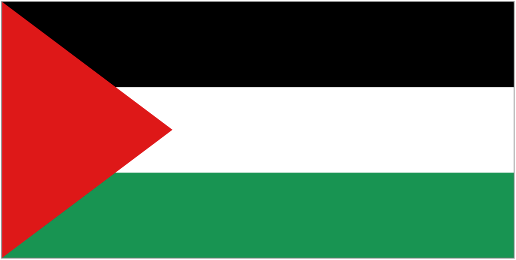

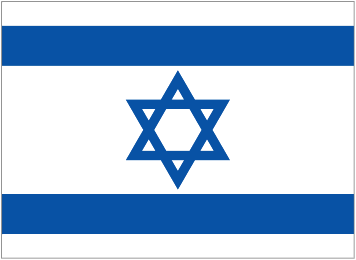 |
 | Peace Monuments in Palestine
(& Selected Events) Before 1949 |
Click here for peace monuments in Palestine before 1949 -- with chronology of selected events before 1949 -- THIS WEB PAGE
Click here for peace monuments in Palestine (West Bank & Gaza) since 1948
Click here for peace monuments in Israel (All EXCEPT Jerusalem) since 1948 -- with chronology of selected events since 1948
Click here for peace monuments in Israel (Arab monuments ONLY) since 1948
Click here for peace monuments in Jerusalem (West & East) since 1948
Click here for peace monuments at Yad Vashem Holocaust Memorial in West Jerusalem (Israel)
Click here for peace monuments related to Olive Trees & Olive Branches worldwide
Click here for peace monuments related to Quakers (Society of Friends) worldwide
Click here for peace monuments related to Rachel Corrie [1979-2003] worldwide
Click here for Oldest & Biggest Peace Monuments worldwide
Click here for Palestinian Village of Deir Yassin in West Jerusalem (Israel)
Click here for Peace Poles in Palestine & Israel
Click here for Vocabulary of the Israel/Palestine Conflict
Right click image to enlarge.



| T
R
E
E
S | 
 Ancient - Olive trees, Garden of Gethsemane, Mount of Olives, East Jerusalem (Palestine/Israel). Where, according to Biblical texts, Jesus & his disciples are said to have prayed the night before his crucifixion. Trees are said to be over 2000 years old. Next to the 1924 Church of all Nations (right image). Ancient - Olive trees, Garden of Gethsemane, Mount of Olives, East Jerusalem (Palestine/Israel). Where, according to Biblical texts, Jesus & his disciples are said to have prayed the night before his crucifixion. Trees are said to be over 2000 years old. Next to the 1924 Church of all Nations (right image).
|
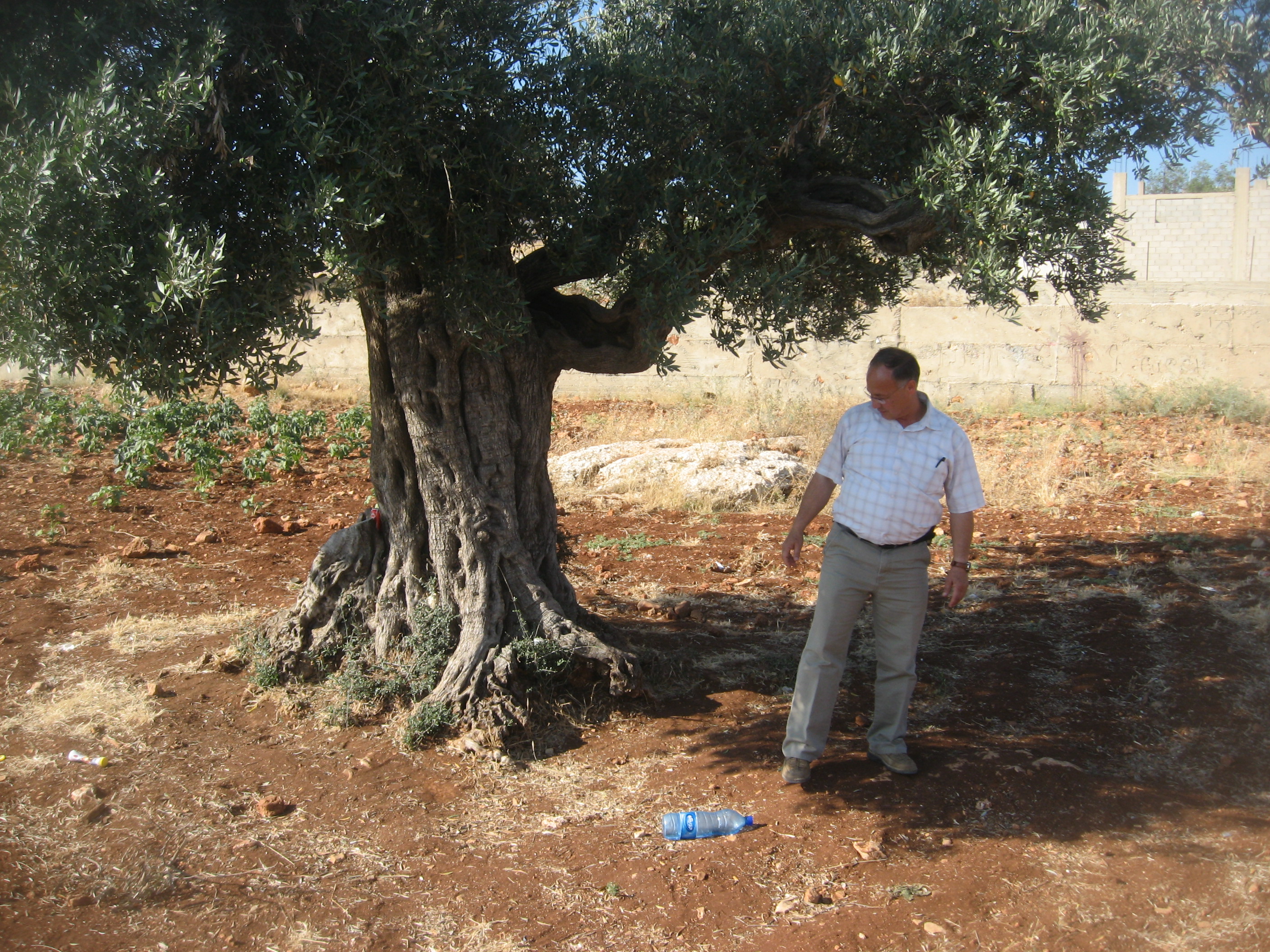

 | T
R
E
E |  Ancient -
Olive Tree named "Mahaseem," Bil'in, West Bank (Occupied Palestine). Believed to be 1,000 years old. On road between Palestinian village & Israeli apartheid fence which Bil'in residents protest every Friday (sometimes accompanied by "internationals"). Left image shows the tree & the tree's owner Radwan Yasen (some of whose olive trees have been destroyed by Israel). Right image shows Israeli troops through the fence. Both photos taken June 18, 2011. Click here for AP story dated June 27, 2011, about partial removal of the fence at Bil'in (as published in the Boston Globe). Ancient -
Olive Tree named "Mahaseem," Bil'in, West Bank (Occupied Palestine). Believed to be 1,000 years old. On road between Palestinian village & Israeli apartheid fence which Bil'in residents protest every Friday (sometimes accompanied by "internationals"). Left image shows the tree & the tree's owner Radwan Yasen (some of whose olive trees have been destroyed by Israel). Right image shows Israeli troops through the fence. Both photos taken June 18, 2011. Click here for AP story dated June 27, 2011, about partial removal of the fence at Bil'in (as published in the Boston Globe).
|


 
 | S
C
H
O
O
L |  1853 - Talitha Kumi, King George Street, West Jerusalem (Israel). "The first school of girls in Jerusalem was given the name Talitha Kumi. That's an Aramaic term that occurs in Mark 5:41: When Jesus encountered a twelve-year old girl at the moment of death, he took her hand and said, 'Little girl, arise.' The name positioned below the clock and above an arch announced to all that education for young girls was important. The first Lutheran Missionaries came from a small village on the Rhine River of Germany called Kaiserswerth, where there was a school of Deaconesses. Their most famous graduate in 1853 was Florence Nightengale [1820-1910]. But three others came to Jerusalem that same year to establish Talitha Kumi.
After the 1948 war, the school was demolished to make room for a new department store. Yet thousands of cars [still] drive by each day to see the arch with its clock & the words Talitha Kumi, left as a monument of earliers days.
Talitha Kumi, however, did not die, but a new school was built in the West Bank town of Beit Jala [lower left image] -- now one of the top coed schools in the country, where Christians & Muslims study side by side, learning respect for each other's faith, & enhancing their academic work with strong programs in music, environmental education & peace studies." 1853 - Talitha Kumi, King George Street, West Jerusalem (Israel). "The first school of girls in Jerusalem was given the name Talitha Kumi. That's an Aramaic term that occurs in Mark 5:41: When Jesus encountered a twelve-year old girl at the moment of death, he took her hand and said, 'Little girl, arise.' The name positioned below the clock and above an arch announced to all that education for young girls was important. The first Lutheran Missionaries came from a small village on the Rhine River of Germany called Kaiserswerth, where there was a school of Deaconesses. Their most famous graduate in 1853 was Florence Nightengale [1820-1910]. But three others came to Jerusalem that same year to establish Talitha Kumi.
After the 1948 war, the school was demolished to make room for a new department store. Yet thousands of cars [still] drive by each day to see the arch with its clock & the words Talitha Kumi, left as a monument of earliers days.
Talitha Kumi, however, did not die, but a new school was built in the West Bank town of Beit Jala [lower left image] -- now one of the top coed schools in the country, where Christians & Muslims study side by side, learning respect for each other's faith, & enhancing their academic work with strong programs in music, environmental education & peace studies." 
|
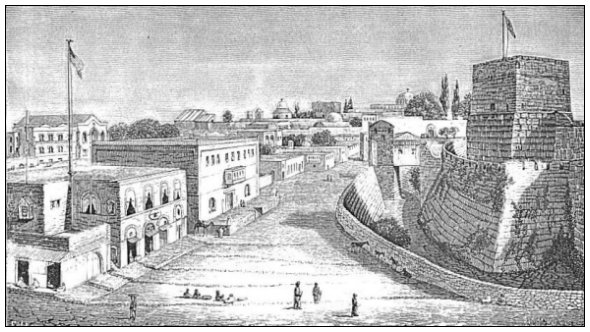

 
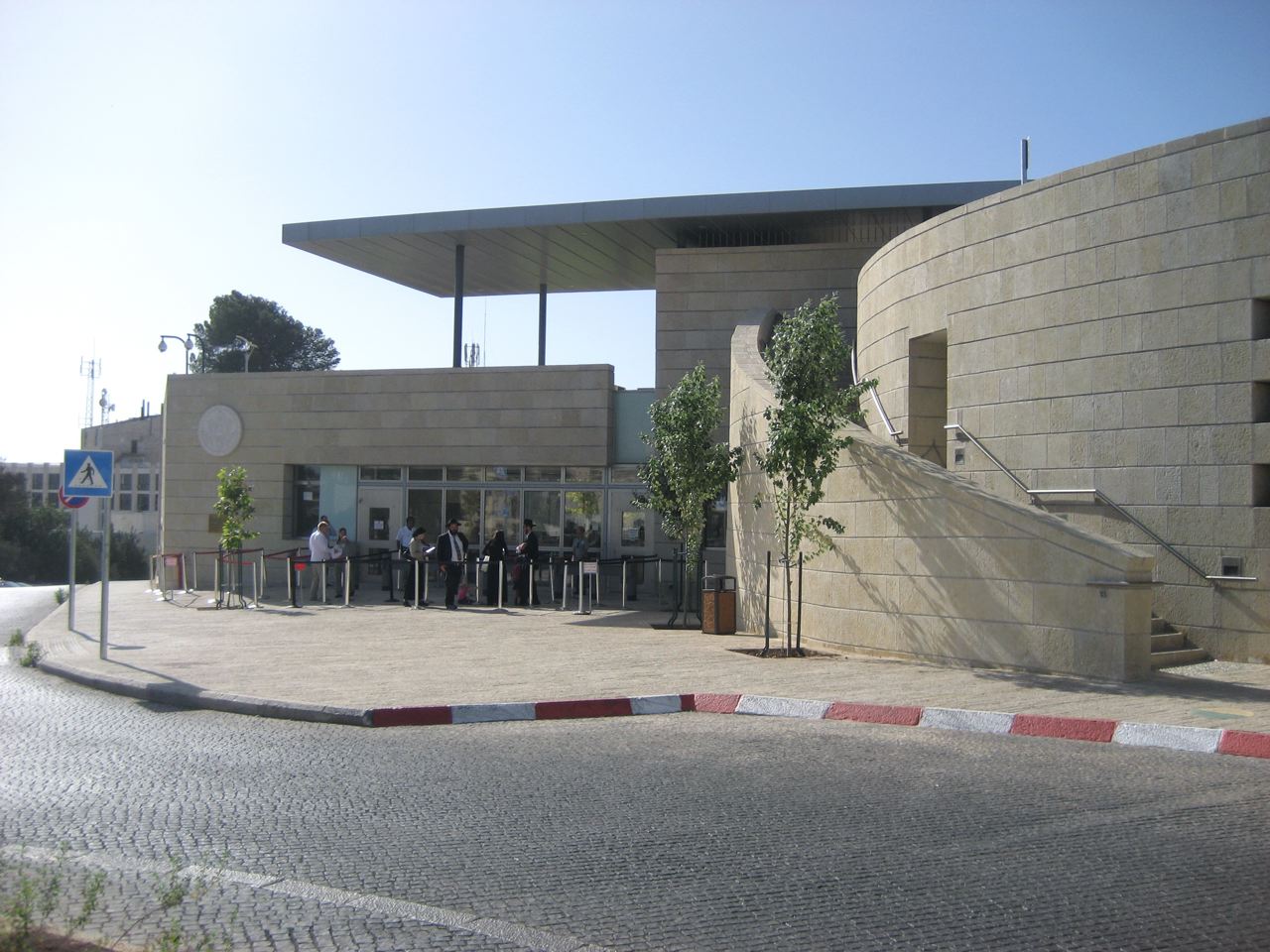

| C
O
N
S
U
L
A
T
E |  1857 - American Consulate General, East Jerusalem. "President John Tyler appointed the first US consul to Jerusalem in 1844. A permanent consular presence was established in 1857, in a building [top image] just inside the Jaffa Gate in the Old City. That building today houses the Swedish Christian Study Center [2nd image].
The mission moved to a second site on the Street of the Prophets (then the main road out of the Old City) in the late 19th century, before relocating in 1912 to its present location on 18 Agron Road [3rd image]. The building on Agron Road [Mamillah Road] was built in 1868 by the German Lutheran missionary Ferdinand Vester, whose family and associates built many of the Arab-style homes in Jerusalem (particularly in the nearby German Colony), as well as what is now the American Colony Hotel (qv). The building was one of the first houses constructed outside the Old City walls, built at the same time that Moses Montefiore [1784-1885] founded the housing area of Yemin Moshe [4th image] outside the Old City. The original building had only two stories; a third story was added in the mid-twentieth century. It now houses both the Consul General's residence and office space for Consulate General employees.
(A building on Nablus Road has been under US Government lease since 1951. Until September 2010, it housed the Consulate General’s consular section, which provides American citizen and visa services. The consular section is now located at 14 David Flusser Street in Arnona {bottom image].)
In 2006, the US Consulate General expanded its presence on Agron Road with a lease of an adjacent building for its administrative and public affairs offices. The building, a monastery of the Congregation of the Mission (also known as the Lazarists) was built in the 1860's and still houses a small group of Lazarist clergy. The walls of both buildings on Agron Road are built of the distinctive Red Slayeb stone typical of many of Jerusalem’s historic buildings.
The mission was designated a Consulate General in 1928. It now represents the USA in Jerusalem, the West Bank, & the Gaza Strip as an independent mission [independent of the Embassy in Tel Aviv?!], with the Consul General serving as chief of mission. The Consulate General also provides services to American citizens in this district. (There are over 80,000 registered U.S. citizens in the areas covered by the Consulate – making it one of the busiest consular districts in the world in terms of American citizen services.) Throughout its history, staff of the Consulate General has included Christians, Muslims & Jews, demonstrating that people of different faiths & nationalities can work together in peace in this region. 1857 - American Consulate General, East Jerusalem. "President John Tyler appointed the first US consul to Jerusalem in 1844. A permanent consular presence was established in 1857, in a building [top image] just inside the Jaffa Gate in the Old City. That building today houses the Swedish Christian Study Center [2nd image].
The mission moved to a second site on the Street of the Prophets (then the main road out of the Old City) in the late 19th century, before relocating in 1912 to its present location on 18 Agron Road [3rd image]. The building on Agron Road [Mamillah Road] was built in 1868 by the German Lutheran missionary Ferdinand Vester, whose family and associates built many of the Arab-style homes in Jerusalem (particularly in the nearby German Colony), as well as what is now the American Colony Hotel (qv). The building was one of the first houses constructed outside the Old City walls, built at the same time that Moses Montefiore [1784-1885] founded the housing area of Yemin Moshe [4th image] outside the Old City. The original building had only two stories; a third story was added in the mid-twentieth century. It now houses both the Consul General's residence and office space for Consulate General employees.
(A building on Nablus Road has been under US Government lease since 1951. Until September 2010, it housed the Consulate General’s consular section, which provides American citizen and visa services. The consular section is now located at 14 David Flusser Street in Arnona {bottom image].)
In 2006, the US Consulate General expanded its presence on Agron Road with a lease of an adjacent building for its administrative and public affairs offices. The building, a monastery of the Congregation of the Mission (also known as the Lazarists) was built in the 1860's and still houses a small group of Lazarist clergy. The walls of both buildings on Agron Road are built of the distinctive Red Slayeb stone typical of many of Jerusalem’s historic buildings.
The mission was designated a Consulate General in 1928. It now represents the USA in Jerusalem, the West Bank, & the Gaza Strip as an independent mission [independent of the Embassy in Tel Aviv?!], with the Consul General serving as chief of mission. The Consulate General also provides services to American citizens in this district. (There are over 80,000 registered U.S. citizens in the areas covered by the Consulate – making it one of the busiest consular districts in the world in terms of American citizen services.) Throughout its history, staff of the Consulate General has included Christians, Muslims & Jews, demonstrating that people of different faiths & nationalities can work together in peace in this region. 
|
 | G
R
A
V
E |  1866 - Grave of Dr. Thomas Hodgkin, Jaffa (Israel). "Dr. Thomas Hodgkin [1798-1866] "was a a pioneer in preventive medicine...best known for the first account of Hodgkin's disease... He was born to a Quaker family in Pentonville, St. James Parish, Middlesex (England)... He accompanied his close friend [Jewish philanthropist] Sir Moses Montefiore [1784-1885] to Palestine, contracted dysentery, died on 4 April 1866, and was buried in Jaffa. There is a blue plaque on his house in Bedford Square, London (England)." /// Dr. Hodgkin was a great uncle of Quaker medical missionary Henry Theodore Hodgkin [1876-1933] who founded the Fellowship of Reconcilation (FOR) in the UK 1914, founded FOR in the USA in 1915 & served as the first director of Pendle Hill, the Quaker "center for study and contemplation" in Wallingford, Pennsylvania (USA). 1866 - Grave of Dr. Thomas Hodgkin, Jaffa (Israel). "Dr. Thomas Hodgkin [1798-1866] "was a a pioneer in preventive medicine...best known for the first account of Hodgkin's disease... He was born to a Quaker family in Pentonville, St. James Parish, Middlesex (England)... He accompanied his close friend [Jewish philanthropist] Sir Moses Montefiore [1784-1885] to Palestine, contracted dysentery, died on 4 April 1866, and was buried in Jaffa. There is a blue plaque on his house in Bedford Square, London (England)." /// Dr. Hodgkin was a great uncle of Quaker medical missionary Henry Theodore Hodgkin [1876-1933] who founded the Fellowship of Reconcilation (FOR) in the UK 1914, founded FOR in the USA in 1915 & served as the first director of Pendle Hill, the Quaker "center for study and contemplation" in Wallingford, Pennsylvania (USA).
 | 
|
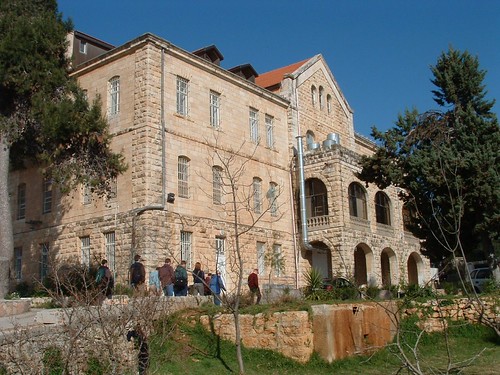
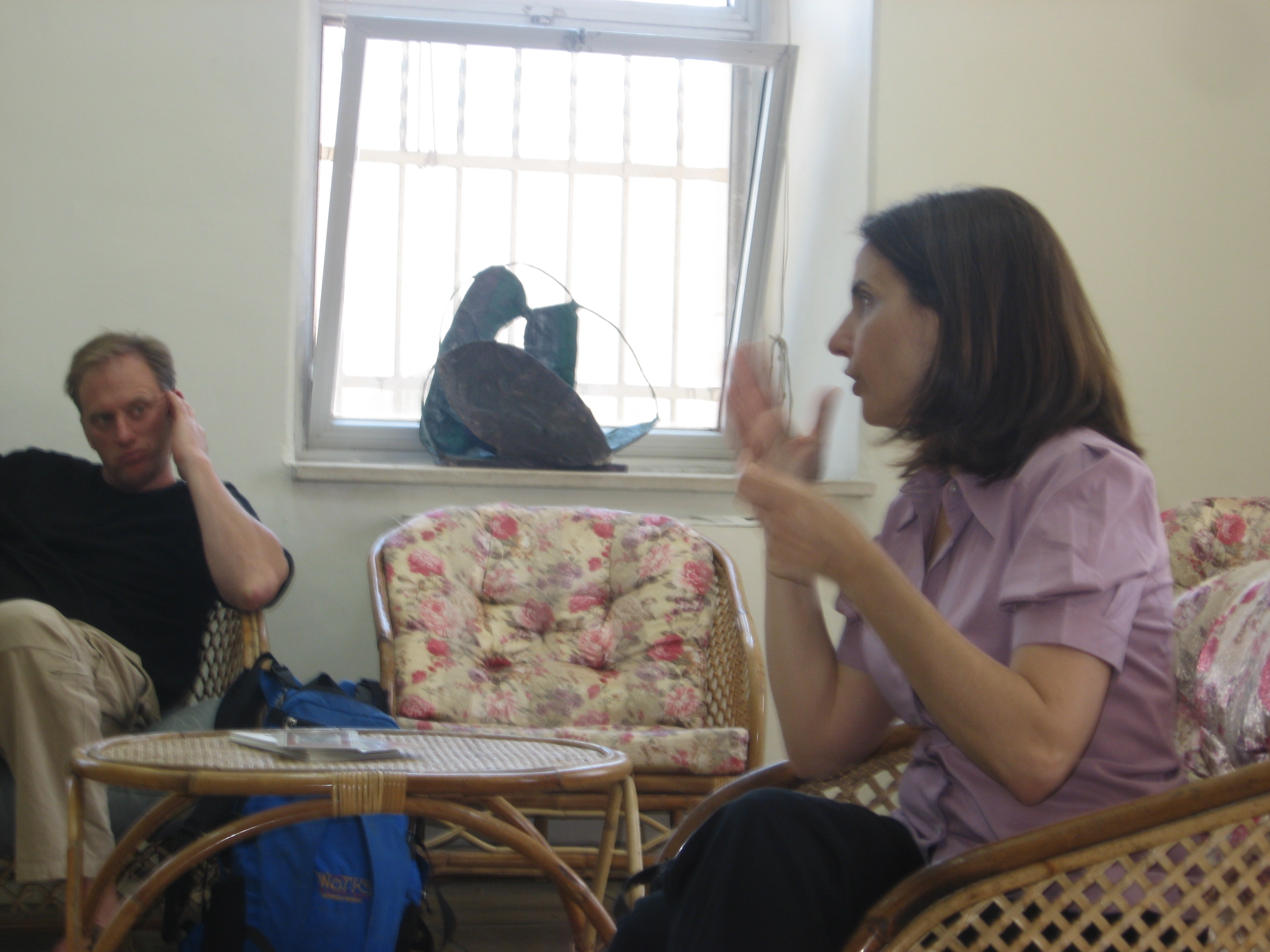
 | S
C
H
O
O
L |  1869 - Ramallah Friends Schools (RFS), Ramallah (Palestine). The Friends Girls' School was inaugurated in 1869; the construction of the Friends Boy's School began in 1901 and opened in 1918. Right image shows director Joyce Ajlouny on June ___, 2011.
In the Science Hall dedicated circa
January 1998, the "main lecture hall [is] named in honor of Jim Harb [of Knoxville, Tennessee], in recognition of his efforts in the RFS Second Century Campaign and in securing funding for the building through USAID." 1869 - Ramallah Friends Schools (RFS), Ramallah (Palestine). The Friends Girls' School was inaugurated in 1869; the construction of the Friends Boy's School began in 1901 and opened in 1918. Right image shows director Joyce Ajlouny on June ___, 2011.
In the Science Hall dedicated circa
January 1998, the "main lecture hall [is] named in honor of Jim Harb [of Knoxville, Tennessee], in recognition of his efforts in the RFS Second Century Campaign and in securing funding for the building through USAID." 
|

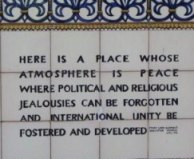

| Y
M
C
A |  1878 - YMCA Jerusalem International, West Jerusalem. Owned by of the YMCA of the USA. Existing building (dedicated April 18, 1933) has elegant arches, domes & a 152-foot observation tower. (From dedication address by Field Marshal Edmund Lord Allenby: "Here is a place whose atmosphere is peace, where political & religious jealousies can be forgotten & international unity fostered & developed." "Contrary to popular belief, there is a place in the Holy Land where Palestinians & Israelis peacefully coexist. Life at the YMCA is unique in that members of all faiths gather together everyday to enjoy leisurely pastimes such as working out & drinking coffee... For decades, financial support from U.S. YMCAs & the international community has played an invaluable role in the success of the Arab-Jewish Peace Kindergarten and the teen and young adult coexistence programs." /// Three Arches Hotel is now part of the "YMCA complex." 1878 - YMCA Jerusalem International, West Jerusalem. Owned by of the YMCA of the USA. Existing building (dedicated April 18, 1933) has elegant arches, domes & a 152-foot observation tower. (From dedication address by Field Marshal Edmund Lord Allenby: "Here is a place whose atmosphere is peace, where political & religious jealousies can be forgotten & international unity fostered & developed." "Contrary to popular belief, there is a place in the Holy Land where Palestinians & Israelis peacefully coexist. Life at the YMCA is unique in that members of all faiths gather together everyday to enjoy leisurely pastimes such as working out & drinking coffee... For decades, financial support from U.S. YMCAs & the international community has played an invaluable role in the success of the Arab-Jewish Peace Kindergarten and the teen and young adult coexistence programs." /// Three Arches Hotel is now part of the "YMCA complex." 
|

 | 1881-1903 - The "First Aliyah." An estimated 25-35,000 Jews migrated to Palestine mostly from Eastern Europe & Yemen. They laid the cornerstone for Jewish settlement in Israel & created several settlements such as Rishon LeZion, Rosh Pina, Zikhron Ya'aqov & Gedera. Tel Aviv was founded on sand dunes purchased from Bedouins north of Jaffa. /// Image is "from designer Hayim Shtayer's important collection of Jewish New Year Cards. We see Stars of David on the Pre-Israeli flag & on the dress of the Daughter of Zion, on the background of the new city - Tel Aviv. The words on top are written in Yiddish: 'Panoramic view of Tel Aviv.'"
|
 | C
O
N
F |
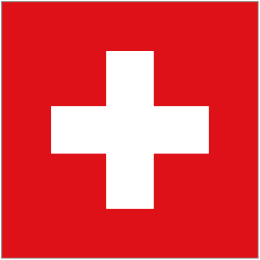 August 29-31, 1897 - First Zionist Congress, Basel (Switzerland). Convened & chaired by Theodor Herzl [1860-1904], founder of the modern Zionism movement. Formulated a Zionist platform, known as the Basle program, and founded the Zionist Organization. Also adopted the Hatikvah as its anthem (already the anthem of Hovevei Zion & later to become the national anthem of the State of Israel).
August 29-31, 1897 - First Zionist Congress, Basel (Switzerland). Convened & chaired by Theodor Herzl [1860-1904], founder of the modern Zionism movement. Formulated a Zionist platform, known as the Basle program, and founded the Zionist Organization. Also adopted the Hatikvah as its anthem (already the anthem of Hovevei Zion & later to become the national anthem of the State of Israel).
| 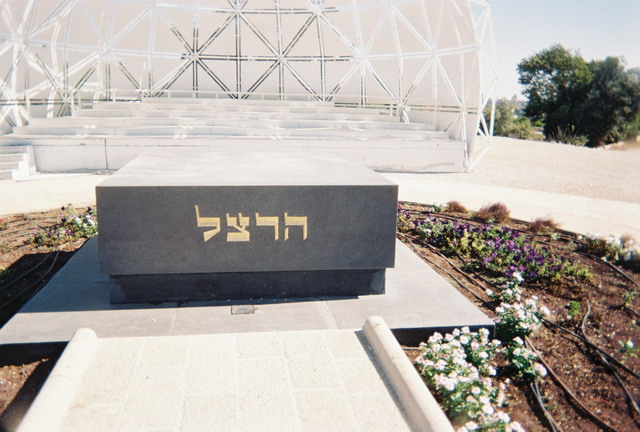
| G
R
A
V
E |
 1949 - Grave of Theodor Herzl, Mount Herzl, Jerusalem (Israel). When Herzl died in 1904, he was interred in Vienna (Austria). It was only in 1949, 45 years later, that Herzl's remains were brought to Israel and reinterred in Jerusalem. Mount Herzl is Israel's national cemetery on the west side of Jerusalem. Herzl's tomb lies at the top of the hill. Israel's war dead & major political leaders are also buried there. Yad Vashem, which commemorates the Holocaust, lies just to the west of Mount Herzl. 1949 - Grave of Theodor Herzl, Mount Herzl, Jerusalem (Israel). When Herzl died in 1904, he was interred in Vienna (Austria). It was only in 1949, 45 years later, that Herzl's remains were brought to Israel and reinterred in Jerusalem. Mount Herzl is Israel's national cemetery on the west side of Jerusalem. Herzl's tomb lies at the top of the hill. Israel's war dead & major political leaders are also buried there. Yad Vashem, which commemorates the Holocaust, lies just to the west of Mount Herzl.
|

 |
H
O
T
E
L |  1902 - American Colony Hotel, East Jerusalem. "Has has always been known as a neutral island, remaining outside the turbulent politics of the land. Owned neither by Arabs or Jews, but by Americans, British and Swedes, it has always had friends from all sectors of Jerusalem’s mixed society. An 'oasis' where Jews & Arabs comfortably meet, it is also a favorite haven for international journalists, high-ranking officers of the UN & diplomats from across the world." 1902 - American Colony Hotel, East Jerusalem. "Has has always been known as a neutral island, remaining outside the turbulent politics of the land. Owned neither by Arabs or Jews, but by Americans, British and Swedes, it has always had friends from all sectors of Jerusalem’s mixed society. An 'oasis' where Jews & Arabs comfortably meet, it is also a favorite haven for international journalists, high-ranking officers of the UN & diplomats from across the world." 
|
1904-1914 - The "Second Aliyah." Approximately 40,000 Jews immigrated mostly from Russia & Poland, & some from Yemen. They were primarily idealists, inspired by the revolutionary ideals then sweeping the Russian Empire, and sought to create a communal agricultural settlement system in Palestine. They thus founded the kibbutz movement. The first kibbutz, Degania, was founded in 1909. The Second Aliyah is largely credited with the revival of the Hebrew language.
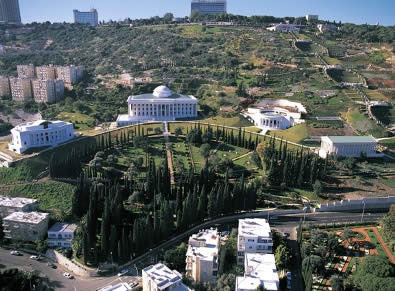



| S
H
R
I
N
E | G
A
R
D
E
N |  March 21, 1909 - Shrine & Gardens, Baha'i World Centre, Mount Carmel, Haifa (Israel). Many of the locations at the Baha'i World Centre, including the terraces and the Shrine of the Bab (right image) which constitute the north slope of Mount Carmel, were inscribed on the World Heritage List in July 2008. There are also many Bahá'í holy places in and around Acre (27 road km north of Haifa). They originate from the imprisonment of Baha'i founder Bahá'u'lláh [1817-1892] during Ottoman Rule. March 21, 1909 - Shrine & Gardens, Baha'i World Centre, Mount Carmel, Haifa (Israel). Many of the locations at the Baha'i World Centre, including the terraces and the Shrine of the Bab (right image) which constitute the north slope of Mount Carmel, were inscribed on the World Heritage List in July 2008. There are also many Bahá'í holy places in and around Acre (27 road km north of Haifa). They originate from the imprisonment of Baha'i founder Bahá'u'lláh [1817-1892] during Ottoman Rule.
|
1910's

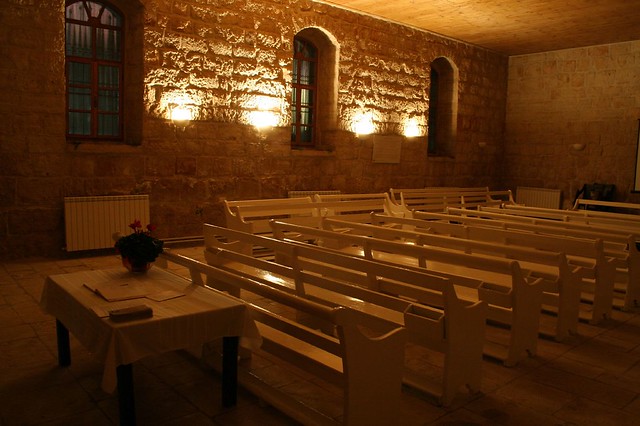
 | M
T
G |  March 6, 1910 - Friends Meeting House, Ramallah (Occupied West Bank). One of the very few Friends meeting houses in the Middle East. In 1948 the buildings and grounds became the home to many Palestinian refugees. On March 6, 2005, exactly 95 years to the day after the dedication, the restored Meetinghouse & Annex were rededicated as a Quaker & community resource. Friends meet every Sunday morning at 10:30 am for unprogrammed Meeting for Worship. Everyone is welcome to attend. March 6, 1910 - Friends Meeting House, Ramallah (Occupied West Bank). One of the very few Friends meeting houses in the Middle East. In 1948 the buildings and grounds became the home to many Palestinian refugees. On March 6, 2005, exactly 95 years to the day after the dedication, the restored Meetinghouse & Annex were rededicated as a Quaker & community resource. Friends meet every Sunday morning at 10:30 am for unprogrammed Meeting for Worship. Everyone is welcome to attend.
|
 

| D
O
V
E |  April 10, 1910 - Dove of Peace, Hagia Maria Sion Abbey, Mount Zion, Jerusalem. In a Benedictine abbey just outside the walls of the Old City near the Zion Gate. Known as the Abbey of the Dormition of the Virgin Mary until 1998. April 10, 1910 - Dove of Peace, Hagia Maria Sion Abbey, Mount Zion, Jerusalem. In a Benedictine abbey just outside the walls of the Old City near the Zion Gate. Known as the Abbey of the Dormition of the Virgin Mary until 1998.
|
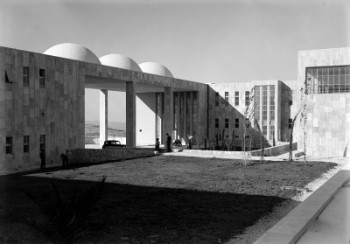
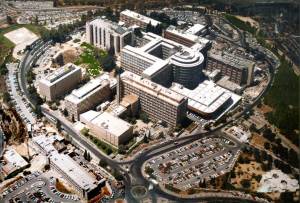
| H
O
S
P
I
T
A
L |  1918 -
Hadassah Medical Center, Mount Scopus, East Jerusalem. From Hadassah’s first hospital on Jerusalem’s Street of the Prophets – a gift of the Rothschild family in 1918 – the Center now includes two university hospitals – on Mount Scopus & in Ein Kerem. Nominated for the Nobel Peace Prize in 2005 due to its equality in treatment, its ethnic & religious diversity, and its efforts to build bridges to peace. /// "The complex on Mount Scopus [upper image], designed by architect Erich Mendelsohn [1887-1953], opened its doors in 1939. On April 13, 1948, an armoured convoy of doctors, nurses & other staff made its way to the hospital. The group was ambushed, and 78 people were killed in what became known as the Hadassah medical convoy massacre. Under the 1949 armistice agreement with Jordan, Mount Scopus was declared a demilitarized enclave, and operation of the hospital became impossible. The staff moved to temporary quarters in Jerusalem, and in 1961 a new campus was built in Ein Kerem in southwest Jerusalem [lower image]. After the unification of Jerusalem by the Six-Day War in 1967, Hadassah Mount Scopus underwent extensive renovations, reopening in 1975. 1918 -
Hadassah Medical Center, Mount Scopus, East Jerusalem. From Hadassah’s first hospital on Jerusalem’s Street of the Prophets – a gift of the Rothschild family in 1918 – the Center now includes two university hospitals – on Mount Scopus & in Ein Kerem. Nominated for the Nobel Peace Prize in 2005 due to its equality in treatment, its ethnic & religious diversity, and its efforts to build bridges to peace. /// "The complex on Mount Scopus [upper image], designed by architect Erich Mendelsohn [1887-1953], opened its doors in 1939. On April 13, 1948, an armoured convoy of doctors, nurses & other staff made its way to the hospital. The group was ambushed, and 78 people were killed in what became known as the Hadassah medical convoy massacre. Under the 1949 armistice agreement with Jordan, Mount Scopus was declared a demilitarized enclave, and operation of the hospital became impossible. The staff moved to temporary quarters in Jerusalem, and in 1961 a new campus was built in Ein Kerem in southwest Jerusalem [lower image]. After the unification of Jerusalem by the Six-Day War in 1967, Hadassah Mount Scopus underwent extensive renovations, reopening in 1975.  
|

 Date? - Hadassah Massacre Memorial, near Nashashibi Bend, East Jerusalem. Site of the massacre on April 13, 1948. Date? - Hadassah Massacre Memorial, near Nashashibi Bend, East Jerusalem. Site of the massacre on April 13, 1948.
|
1920's
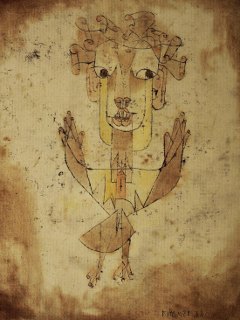

|  1920 - Angelus Novus / "New Angel," Israel Museum, Jerusalem (Israel). By Paul Klee [1879-1940]. "Object of an interpretative text by German philosopher & literary critic Walter Benjamin [1892-1940], who purchased the painting in 1921. In his 'Theses on the Philosophy of History' [1940] Benjamin wrote "...shows an angel looking as though he is about to move away from something he is fixedly contemplating. His eyes are staring, his mouth is open, his wings are spread. This is how one pictures the angel of history. His face is turned toward the past. Where we perceive a chain of events, he sees one single catastrophe which keeps piling wreckage upon wreckage & hurls it in front of his feet. The angel would like to stay, awaken the dead & make whole what has been smashed. But a storm is blowing from Paradise; it has got caught in his wings with such violence that the angel can no longer close them. The storm irresistibly propels him into the future to which his back is turned, while the pile of debris before him grows skyward. This storm is what we call progress." 1920 - Angelus Novus / "New Angel," Israel Museum, Jerusalem (Israel). By Paul Klee [1879-1940]. "Object of an interpretative text by German philosopher & literary critic Walter Benjamin [1892-1940], who purchased the painting in 1921. In his 'Theses on the Philosophy of History' [1940] Benjamin wrote "...shows an angel looking as though he is about to move away from something he is fixedly contemplating. His eyes are staring, his mouth is open, his wings are spread. This is how one pictures the angel of history. His face is turned toward the past. Where we perceive a chain of events, he sees one single catastrophe which keeps piling wreckage upon wreckage & hurls it in front of his feet. The angel would like to stay, awaken the dead & make whole what has been smashed. But a storm is blowing from Paradise; it has got caught in his wings with such violence that the angel can no longer close them. The storm irresistibly propels him into the future to which his back is turned, while the pile of debris before him grows skyward. This storm is what we call progress." 
|
July 24, 1922 - League of Nations places the Southern part of Ottoman Syria under the British Mandate for Palestine. 
 
 |
 August 1925 - 14th World Zionist Congress, Concert Hall, Vienna (Austria).
"Zionist Congresses, held at various locations in Europe, were accompanied by exhibits of industrial & farm products of the Land of Israel. Delegates from around the Jewish world encountered, some for the first time, the industrial & agricultural accomplishments of Jewish settlement in the Land of Israel. The selection may have been limited, but every product attracted great interest." Left image is poster for the Palestine Exhibition at the 14th Congress. (Later called Eretz Israel, Palestine would become the State of Israel in 1948.) Right image is post card from the congress with inset photo of Dr. Theodor Herzl [1860-1904], father of Zionism. August 1925 - 14th World Zionist Congress, Concert Hall, Vienna (Austria).
"Zionist Congresses, held at various locations in Europe, were accompanied by exhibits of industrial & farm products of the Land of Israel. Delegates from around the Jewish world encountered, some for the first time, the industrial & agricultural accomplishments of Jewish settlement in the Land of Israel. The selection may have been limited, but every product attracted great interest." Left image is poster for the Palestine Exhibition at the 14th Congress. (Later called Eretz Israel, Palestine would become the State of Israel in 1948.) Right image is post card from the congress with inset photo of Dr. Theodor Herzl [1860-1904], father of Zionism.
|
1930's


| H
O
U
S
E |  May 1, 1934 - Avikarius Residence (Villa Lea), Rehavia, Jerusalem (Israel). "Just across the street from the Prime Minister’s residence. [A modernist house] built by Dr. Nassib Abcarius Bey, a successful Greek Orthodox lawyer..." "These days two Israeli families live in the house and most of the time, prefer to keep their privacy." ///
"If it depended on me, I would ask that all the children born from now on be
guests, if just for a moment, at the house in which I was born. The stone tablet at the
entrance to the single non-Jewish home in Rehavia says: 'Villa Lea, 1 May 1934.'
Avikarius was an attorney of Armenian ancestry who arrived in Israel with British
General Edmund Allenby, who conquered the land in World War I from the Turks.
Avikarius fell in love with Lea, a Jewish girl from the ultra-Orthodox neighborhood of
Me’a She’arim, married her and built a home for her in Rehavia.
This is the only home in all Jerusalem that publicly carries a narrative of faiths.
Urban legend says that for his lover, Avikarius went to pray at our synagogue,
Yeshurun. This is the synagogue where I read the Torah on my Bar Mitzvah, and the
only synagogue where the cantor Meislish sang the melodies of the German Jewish
composer Lebendowski, convinced that these were the melodies that the Levites had
sung in the Temple.
Lea then broke his heart, running away to England with a British officer, whom in
turn she dumped for an Egyptian senior official, later disappearing without trace.
Avikarius did not want to stay there any longer, and the house became the property
of the British Mandate. At the end of the 1930's, the British gave the home to the
Ethiopian emperor Haile Selassie
[1892-1975], who fled Mussolini’s troops when they conquered
his country. One day I saw the African king on our porch [lower image] under a parasol to protect him from the blazing Jerusalem sun. Well, not with my own eyes,
since I had not yet been born, but in the Israeli television series 'Pillar of Fire' [1981].
Is it only a coincidence that my parents chose that house to be their home? My
mother was an Arab Jew from Hebron and my father was a German Jew from
Dresden. If more of us knew the stories that our house walls know and remember,
there would be more peace in the world, in the way of my father, and much more
love in the way of my mother. With peace and love, the world is so much better. It
was from this house my mother left for her last journey." [Quoted from the final page of Burg, Avraham (2007, 2008), "The Holocaust is Over: We Must Rise from its Ashes,"]. May 1, 1934 - Avikarius Residence (Villa Lea), Rehavia, Jerusalem (Israel). "Just across the street from the Prime Minister’s residence. [A modernist house] built by Dr. Nassib Abcarius Bey, a successful Greek Orthodox lawyer..." "These days two Israeli families live in the house and most of the time, prefer to keep their privacy." ///
"If it depended on me, I would ask that all the children born from now on be
guests, if just for a moment, at the house in which I was born. The stone tablet at the
entrance to the single non-Jewish home in Rehavia says: 'Villa Lea, 1 May 1934.'
Avikarius was an attorney of Armenian ancestry who arrived in Israel with British
General Edmund Allenby, who conquered the land in World War I from the Turks.
Avikarius fell in love with Lea, a Jewish girl from the ultra-Orthodox neighborhood of
Me’a She’arim, married her and built a home for her in Rehavia.
This is the only home in all Jerusalem that publicly carries a narrative of faiths.
Urban legend says that for his lover, Avikarius went to pray at our synagogue,
Yeshurun. This is the synagogue where I read the Torah on my Bar Mitzvah, and the
only synagogue where the cantor Meislish sang the melodies of the German Jewish
composer Lebendowski, convinced that these were the melodies that the Levites had
sung in the Temple.
Lea then broke his heart, running away to England with a British officer, whom in
turn she dumped for an Egyptian senior official, later disappearing without trace.
Avikarius did not want to stay there any longer, and the house became the property
of the British Mandate. At the end of the 1930's, the British gave the home to the
Ethiopian emperor Haile Selassie
[1892-1975], who fled Mussolini’s troops when they conquered
his country. One day I saw the African king on our porch [lower image] under a parasol to protect him from the blazing Jerusalem sun. Well, not with my own eyes,
since I had not yet been born, but in the Israeli television series 'Pillar of Fire' [1981].
Is it only a coincidence that my parents chose that house to be their home? My
mother was an Arab Jew from Hebron and my father was a German Jew from
Dresden. If more of us knew the stories that our house walls know and remember,
there would be more peace in the world, in the way of my father, and much more
love in the way of my mother. With peace and love, the world is so much better. It
was from this house my mother left for her last journey." [Quoted from the final page of Burg, Avraham (2007, 2008), "The Holocaust is Over: We Must Rise from its Ashes,"].
|
 


| P
O
S
T
E
R
S | 1936 - "Visit Palestine" Poster (top image). "Originally designed by Franz Kraus [1905-1998] & published by the Tourist Association of Palestine, a Zionist development agency. We see the vast walled city of Jerusalem: trim parks, green gardens, urban dwellings, and a central landmark, the Dome of the Rock mosque. /// With this one poster pulled out of the Zionist attic, three core myths are debunked. The first myth is that Palestine had ever been a land without people. Obviously someone lived in these houses and someone tended these gardens. The second myth is that Palestine was a vast desert awaiting cultivation. The resplendent tree in the foreground suggests that the land surrounding Jerusalem was much more than barren desert. The third myth is that there never was a Palestine. Of course there was a Palestine, and here it is, called by name in a Zionist-published poster.
During the early days of the Israel-building process, Zionist strategists had to simultaneously project different and sometimes conflicting images of Israel to different audiences in order to draw the critical mass and range of support the young movement desperately needed. Visit Palestine is just one out of a whole pre-independence category of posters referred to as the recruit Zion genre.
/// David Tartakover reprinted this poster in 1995 as a way of celebrating the optimism generated by the Oslo Peace Accords. Made available through the Tel Aviv Museum, it was a hot item among Israelis and — ironically — among Palestinians, too. Unauthorized reprintings have extended its distribution, and it has been posted in homes, shops, and offices all over the West Bank and Gaza. The Palestinians, in effect, are taking advantage of the ironies embodied in the provenance of Visit Palestine to thumb their noses at the Israeli government that for decades claimed there had never been such a place. Theoretically, any Zionist poster that featured the word 'Palestine' in the caption would be similarly popular among Palestinians.
'Visit Palestine' is celebrated by the Palestinians for, among other things, the breach it represents in Israel’s famously well-managed corporate information model. Indeed, the poster demonstrates that Zionism is not immune to the laws of irony: carefully crafted slogans and propaganda that worked well when narrowcast in the 1930's tend to embarrass the Zionist cause when broadcast seventy years later.
Palestinians also see the poster as a testament to the hubris of Zionism. Its proponents published the poster to accelerate the rebirth of the Jewish state, an operation had been planned and organized down to the number of hours a new colonist would have to work in order to acquire land for a home. But the Zionists never saw the Palestinians. They failed to predict that the people they were intent on displacing would organize & resist. ///
'Visit Palestine' also raises an important concern about Zionist hasbara (Hebrew: Israel advocacy, solidarity in the U.S.), which has been a key source of information shaping world opinion about Israel. What might be said about the quality of that information, when this early poster from the Zionist movement conveys inaccurate or at least misleading ideas? ///
One final point needs to be made regarding this poster. It, and the others that make up the recruit Zion genre, were crafted under the direction of various Zionist development agencies. They were centrally produced via commercial contracts with ad agencies, public relations firms, advertising specialists, graphic designers, printers & marketing professionals. This is very different from Palestine solidarity posters, which have been created by dispersed individuals & groups operating spontaneously and autonomously. This difference is critical and deserves deeper study." /// Click here for a contrary view.
|
 |  1936 - Arab revolt in Palestine (or Great Arab Revolt). A nationalist uprising by Palestinian Arabs in Mandate Palestine against British colonial rule & mass Jewish immigration. The revolt consisted of two distinct phases. The first phase was directed primarily by the urban & elitist Higher Arab Committee (HAC) & was focused mainly around strikes & other forms of political protest. By October 1936, this phase had been defeated by the British civil administration using a combination of political concessions, international diplomacy (involving the rulers of Iraq, Saudi Arabia, Transjordan & Yemen) & the threat of martial law. Photo shows Armistice Day ceremony at War Graves Cemetery on Mount Scopus, November 11, 1936. 1936 - Arab revolt in Palestine (or Great Arab Revolt). A nationalist uprising by Palestinian Arabs in Mandate Palestine against British colonial rule & mass Jewish immigration. The revolt consisted of two distinct phases. The first phase was directed primarily by the urban & elitist Higher Arab Committee (HAC) & was focused mainly around strikes & other forms of political protest. By October 1936, this phase had been defeated by the British civil administration using a combination of political concessions, international diplomacy (involving the rulers of Iraq, Saudi Arabia, Transjordan & Yemen) & the threat of martial law. Photo shows Armistice Day ceremony at War Graves Cemetery on Mount Scopus, November 11, 1936.
|
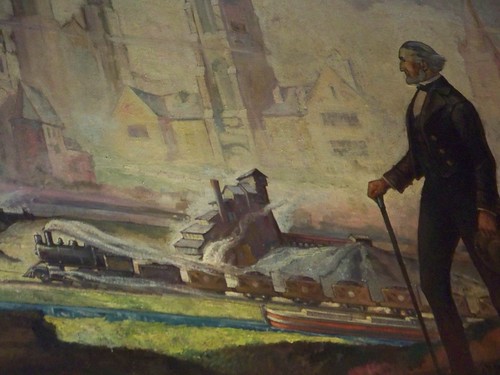 
 |
M
U
R
A
L
S |  1937 - Seven large murals, Mural Ballroom, Hotel Bethlehem, Bethlehem (Palestine). "Painted by George Gray in 1937 to depict the history of Bethlehem. One of the larger murals retells the story of how Count Zinzendorf and other early settlers named the city of Bethlehem on Christmas Eve in 1741. This event took place in a crude cabin on the site now occupied by our Award winning hotel... Restored to its original 1922 grandeur, Historic Hotel Bethlehem's floor-to-ceiling palladium windows provide dramatic views of the historic shopping district just outside our front doors." 1937 - Seven large murals, Mural Ballroom, Hotel Bethlehem, Bethlehem (Palestine). "Painted by George Gray in 1937 to depict the history of Bethlehem. One of the larger murals retells the story of how Count Zinzendorf and other early settlers named the city of Bethlehem on Christmas Eve in 1741. This event took place in a crude cabin on the site now occupied by our Award winning hotel... Restored to its original 1922 grandeur, Historic Hotel Bethlehem's floor-to-ceiling palladium windows provide dramatic views of the historic shopping district just outside our front doors."
|
July 7, 1937 - Addressing the 1936-1939 Arab Revolt in Palestine, the Peel Commission, for the first time, recommends partition. 
Late 1937-1939 - Arab revolt in Palestine (or Great Arab Revolt). The second phase, which began late in 1937, was a violent & peasant-led resistance movement that increasingly targeted British forces. During this phase, the rebellion was brutally suppressed by the British Army & the Palestine Police Force using repressive measures that were intended to intimidate the Arab population & undermine popular support for the revolt. 


![]() |
 1938 - Roman Catholic Franciscan chapel, Mount of Beatitudes, between Capernaum & Gennesaret, northwestern shore of the Sea of Galilee (Israel). Also known as Mount Eremos. Stained glass windows around the dome depict "Blessed are the peacemakers: for they shall be called the children of God" [Matthew 5:9] & the other Beatitudes. 1938 - Roman Catholic Franciscan chapel, Mount of Beatitudes, between Capernaum & Gennesaret, northwestern shore of the Sea of Galilee (Israel). Also known as Mount Eremos. Stained glass windows around the dome depict "Blessed are the peacemakers: for they shall be called the children of God" [Matthew 5:9] & the other Beatitudes.
|
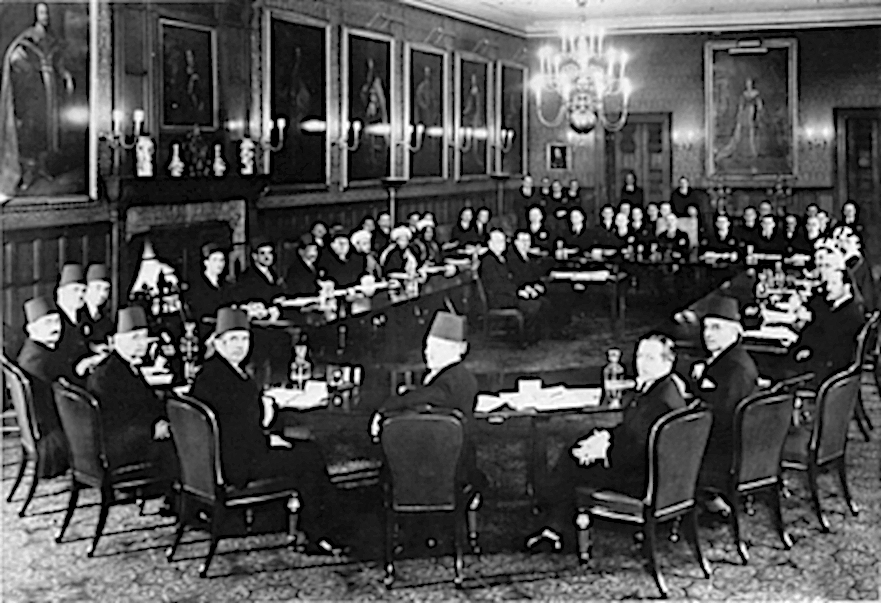
|  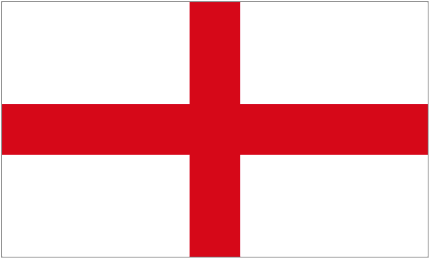 February 1939 - London Conference, St. James' Palace, London (England). February 1939. "To negotiate an agreement between Palestine Arabs & Zionists. The Arab delegation refused to meet its Jewish counterpart, to recognize their authority, or even to use the same entrances to the building, so the British government made separate proposals to the two parties, who both rejected them. The conference ended in failure on March 17, 1939." Photo shows "Palestinian delegates (foreground), Left to right: Fu'ad Saba, Yaqub Al-Ghussein, Musa Alami, Amin Tamimi, Jamal Al-Husseini, Awni Abdul Hadi, George Antonious, and Alfred Roch. Facing the Palestinians are the British, with Sir Neville Chamberlain presiding. To his right is Lord Halifax, and to his left, Malcolm MacDonald." February 1939 - London Conference, St. James' Palace, London (England). February 1939. "To negotiate an agreement between Palestine Arabs & Zionists. The Arab delegation refused to meet its Jewish counterpart, to recognize their authority, or even to use the same entrances to the building, so the British government made separate proposals to the two parties, who both rejected them. The conference ended in failure on March 17, 1939." Photo shows "Palestinian delegates (foreground), Left to right: Fu'ad Saba, Yaqub Al-Ghussein, Musa Alami, Amin Tamimi, Jamal Al-Husseini, Awni Abdul Hadi, George Antonious, and Alfred Roch. Facing the Palestinians are the British, with Sir Neville Chamberlain presiding. To his right is Lord Halifax, and to his left, Malcolm MacDonald."
|
May 1939 - British White Paper states that from 1939-1944 only 75,000 Jews (out of 11,000,000 in Europe) would be allowed to immigrate to Palestine and, after that, immigration would be allowed only with Arab consent. 
 
| F
A
I
R |   1939 - Palestine Pavilion, New York World's Fair, New York City, New York (USA). "Introduced the world to the concept of a modern Jewish state, which a decade later would become Israel. The pavilion featured on its façade an
enormous 14-foot-tall (4.3 m) hammered repoussé copper relief sculpture entitled "The Scholar, The Laborer & the Toiler of the Soil" by the noted Art Deco sculptor Maurice Ascalon [1913-2003]." /// "Three million Americans toured the very popular Palestine Pavilion. There was no mention there of Arabs." /// Ascalon's sculpture is now part of the collection of the Spertus Museum in Chicago, Illinois (USA). Posted on March 30, 2011, by ascalonstudios: "Nudging Sleeping Giants. On a recent visit to Chicago, I was provided with a unique opportunity. I was permitted into the museum archives of the Spertus Institute where I was able to view an artwork created by the hands of my grandfather, Maurice Ascalon, some 70 years ago. Although I had, on countless occasions, seen photos of his massive Art Deco sculpture, this was the first time I had the experience of viewing the project in person. It is among the most historically-significant works to emigre [sic] from modern Israel in the years before statehood. But for decades since, the three massive 14-foot tall figures that comprise the artwork have been at rest – as if in the midst of a deep sleep – lying atop shelves in the Spertus archives [lower image]..." 1939 - Palestine Pavilion, New York World's Fair, New York City, New York (USA). "Introduced the world to the concept of a modern Jewish state, which a decade later would become Israel. The pavilion featured on its façade an
enormous 14-foot-tall (4.3 m) hammered repoussé copper relief sculpture entitled "The Scholar, The Laborer & the Toiler of the Soil" by the noted Art Deco sculptor Maurice Ascalon [1913-2003]." /// "Three million Americans toured the very popular Palestine Pavilion. There was no mention there of Arabs." /// Ascalon's sculpture is now part of the collection of the Spertus Museum in Chicago, Illinois (USA). Posted on March 30, 2011, by ascalonstudios: "Nudging Sleeping Giants. On a recent visit to Chicago, I was provided with a unique opportunity. I was permitted into the museum archives of the Spertus Institute where I was able to view an artwork created by the hands of my grandfather, Maurice Ascalon, some 70 years ago. Although I had, on countless occasions, seen photos of his massive Art Deco sculpture, this was the first time I had the experience of viewing the project in person. It is among the most historically-significant works to emigre [sic] from modern Israel in the years before statehood. But for decades since, the three massive 14-foot tall figures that comprise the artwork have been at rest – as if in the midst of a deep sleep – lying atop shelves in the Spertus archives [lower image]..."
|
1940's
1940-1945 - World War II. "On 10 June 1940, the Kingdom of Italy declared war on France & the United Kingdom... Starting in July 1940, Italian bombings in the British Mandate of Palestine were primarily centered on Tel Aviv & Haifa. However, many other coastal towns such as Acre & Jaffa also suffered. On 9 September 1940, a bombing raid on Tel Aviv caused 137 deaths." 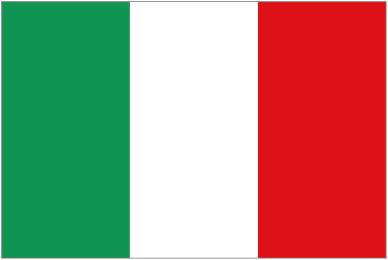
July 1944-April 1945 - Liberation of Nazi death camps. Soviet forces were the first to approach a major Nazi camp, reaching Majdanek near Lublin (Poland) in July 1944.
The Soviets liberated Auschwitz, the largest camp, in January 1945. Shortly before Germany's surrender, Soviet forces liberated the Stutthof, Sachsenhausen & Ravensbrueck camps.
US forces liberated Buchenwald near Weimar (Germany) on April 11, 1945. They also liberated Dora-Mittelbau, Flossenburg, Dachau & Mauthausen.
British forces liberated camps in northern Germany, including Neuengamme. They entered Bergen-Belsen near Celle in mid-April 1945. 
July 22, 1946 - Bombing of the King David Hotel in Jerusalem by Irgun.


|  1947 - "To the Children of the Exile," Kibbutz Mishmar Ha'emek, Jezreel Valley, (Israel). By Ze'ev Ben-Zvi [1904-1952]. "In memory of the 1.5 million children who perished in the Holocaust. Only Holocaust monument erected in Israel prior to the establishment of the State. Consists of a stone wall surrounding a small round plaza. Carved into the wall are four alcoves, each containing groups of sculpted figures. In a small alcove furthest to the left, a small crouching figure depicts the cramped places - often used by children - to hide from the Nazis. In the next alcove, five faceless figures are bent over each other protectively. The third alcove contains seven identical, faceless figures standing one behind the other. The alcove furthest to the right, the largest of the four, shows a mother and a child. The child's arms reach out to her, his mouth open in a cry for help. His mother's long arms stretch over her child, but her head is turned to the side, her eyes closed." 1947 - "To the Children of the Exile," Kibbutz Mishmar Ha'emek, Jezreel Valley, (Israel). By Ze'ev Ben-Zvi [1904-1952]. "In memory of the 1.5 million children who perished in the Holocaust. Only Holocaust monument erected in Israel prior to the establishment of the State. Consists of a stone wall surrounding a small round plaza. Carved into the wall are four alcoves, each containing groups of sculpted figures. In a small alcove furthest to the left, a small crouching figure depicts the cramped places - often used by children - to hide from the Nazis. In the next alcove, five faceless figures are bent over each other protectively. The third alcove contains seven identical, faceless figures standing one behind the other. The alcove furthest to the right, the largest of the four, shows a mother and a child. The child's arms reach out to her, his mouth open in a cry for help. His mother's long arms stretch over her child, but her head is turned to the side, her eyes closed."
|
From June 1947 to August 1949, American Ralph Bunche [1903-1971] worked on the most important assignment of his career - the confrontation between Arabs and Jews in Palestine. He was first appointed as assistant to the UN Special Committee on Palestine, then as principal secretary of the UN Palestine Commission, which was charged with carrying out the partition approved by the UN General Assembly. In early 1948 when this plan was dropped and fighting between Arabs and Israelis became especially severe, the UN appointed Count Folke Bernadotte as mediator and Ralph Bunche as his chief aide. 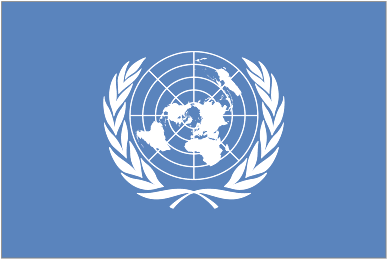
 -picture-MOV_7d75c1bb_b.jpg)

| B
O
AT | F
I
LM |   1947-1952 - "Exodus 1947" - Carried Holocaust survivors & other Jewish emigrants from France to the British Mandate for Palestine, but the British Royal Navy seized the ship and deported all its passengers to the British Zone of Germany. Sign in image reads "HAGANAH Ship / EXODUS 1947." Burned to the waterline in 1952. /// "Exodus" is a 1960 epic war film produced & directed by Otto Preminger from a screenplay by Dalton Trumbo from the 1958 novel "Exodus" by Leon Uris. (See fountain commemorating Dalton Trumbo [1905-1976] on campus of University of Colorado.) 1947-1952 - "Exodus 1947" - Carried Holocaust survivors & other Jewish emigrants from France to the British Mandate for Palestine, but the British Royal Navy seized the ship and deported all its passengers to the British Zone of Germany. Sign in image reads "HAGANAH Ship / EXODUS 1947." Burned to the waterline in 1952. /// "Exodus" is a 1960 epic war film produced & directed by Otto Preminger from a screenplay by Dalton Trumbo from the 1958 novel "Exodus" by Leon Uris. (See fountain commemorating Dalton Trumbo [1905-1976] on campus of University of Colorado.)
|
 |  1969 - "Af-Al-Pi-Chen" (Despite it All), Museum of Clandestine Immigration & Naval History, Haifa (Israel). A 42-meter landing craft. "Sought to break through the British blockade with 434 passengers."
/// "Only remnant of the 116 ships of all shapes & sizes that tried to run the British blockade in order to bring well over 100,000 Jewish refugees to the shores of Mandatory Palestine. The ship, retired from the Israeli navy, was scheduled to be sold for scrap in 1962 when Yosef Almog, a senior naval officer, realized that the "Af-Al-Pi-Chen" was nearly all that was left of a heroic episode in the history of the State of Israel.
The hulk was hauled up on shore, cut into sections and reassembled at the foot of Mount Carmel – a major engineering feat in the 1960's. By 1969, the "Af-Al-Pi-Chen" had become part of a museum under Almog’s directorship, commemorating the protracted 'battle of wills' waged with British authorities over the right to Jewish immigration. Part of the ship has been refitted with 50 cm. wide berths squeezed into the cramped belly of the ship; other parts of the ship, and the adjacent pavilion, display memorabilia from the period - ship models, historic photos, newspaper accounts and mementos from other 'illegal" immigrant ships.' 1969 - "Af-Al-Pi-Chen" (Despite it All), Museum of Clandestine Immigration & Naval History, Haifa (Israel). A 42-meter landing craft. "Sought to break through the British blockade with 434 passengers."
/// "Only remnant of the 116 ships of all shapes & sizes that tried to run the British blockade in order to bring well over 100,000 Jewish refugees to the shores of Mandatory Palestine. The ship, retired from the Israeli navy, was scheduled to be sold for scrap in 1962 when Yosef Almog, a senior naval officer, realized that the "Af-Al-Pi-Chen" was nearly all that was left of a heroic episode in the history of the State of Israel.
The hulk was hauled up on shore, cut into sections and reassembled at the foot of Mount Carmel – a major engineering feat in the 1960's. By 1969, the "Af-Al-Pi-Chen" had become part of a museum under Almog’s directorship, commemorating the protracted 'battle of wills' waged with British authorities over the right to Jewish immigration. Part of the ship has been refitted with 50 cm. wide berths squeezed into the cramped belly of the ship; other parts of the ship, and the adjacent pavilion, display memorabilia from the period - ship models, historic photos, newspaper accounts and mementos from other 'illegal" immigrant ships.'
|
November 29, 1947 - UN Partition Plan: UN General Assembly resolution recommends termination of the British Mandate for Palestine & the partition of the territory into two states, one Jewish & one Arab, with the Jerusalem-Bethlehem area being under special international protection, administered by the UN. Accepted by leaders of the Jewish community in Palestine, through the Jewish Agency, but rejected by leaders of the Arab community (the Palestine Arab Higher Committee etc.), who were supported in their rejection by the states of the Arab League. 
November 1947-July 1949 - War of Israel Independence (1st of Israel's 7 wars). Also called the War of 1948 and the Arab-Israeli War. Exodus -- also called Nakba or Holocaust -- created an estimated 711,000 Palestinian refugees.

![]() | B
U
RI
A
L |  1948 - Martef Hashoah / The Chamber of the Holocaust, Mount Zion, Jerusalem (Israel). "Highly significant as the place where, for the first time, the commandment to give every Jew a Jewish burial in Israel was enacted for victims of the Holocaust. It was also the first site in the new State of Israel to honor the memory of Holocaust victims. The Chamber contains the ashes of some of the Holocaust victims, which were brought to Israel by survivors and entrusted to Rabbi Dr. S.Z. Kahana, who was in charge of Mount Zion at that time. The ashes were buried in a niche together with bars of soap brought from the camps. There is no tombstone." 1948 - Martef Hashoah / The Chamber of the Holocaust, Mount Zion, Jerusalem (Israel). "Highly significant as the place where, for the first time, the commandment to give every Jew a Jewish burial in Israel was enacted for victims of the Holocaust. It was also the first site in the new State of Israel to honor the memory of Holocaust victims. The Chamber contains the ashes of some of the Holocaust victims, which were brought to Israel by survivors and entrusted to Rabbi Dr. S.Z. Kahana, who was in charge of Mount Zion at that time. The ashes were buried in a niche together with bars of soap brought from the camps. There is no tombstone."
|
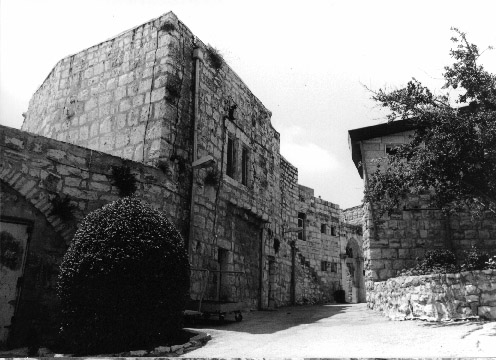

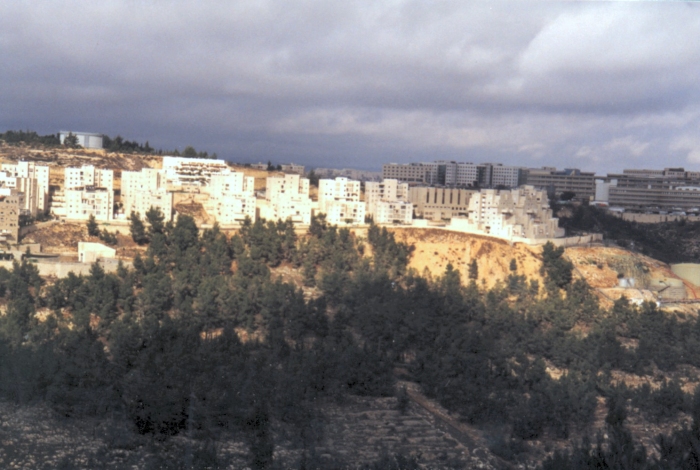
| V
I
L
L
A
G
E |  April 9, 1948 - Palestinian Village of Deir Yassin, near Jerusalem (Israel). Unintentional monument. Scene of the Deir Yassin Massacre (part of the Palestinian Nakba or Holocaust). Top photo taken in December 1996. Middle photo shows the village today as occupied by the Krar Shaul Mental Health Center (closed to the public) between Givat Shaul & Har Nof. Bottom photo is Deir Yassin (in the green trees to the right of the water tower) as seen from Yad Vashem. Click here for video by Deir Yassin Remembered (DYR). Click here separate webpage of Deir Yassin monuments. April 9, 1948 - Palestinian Village of Deir Yassin, near Jerusalem (Israel). Unintentional monument. Scene of the Deir Yassin Massacre (part of the Palestinian Nakba or Holocaust). Top photo taken in December 1996. Middle photo shows the village today as occupied by the Krar Shaul Mental Health Center (closed to the public) between Givat Shaul & Har Nof. Bottom photo is Deir Yassin (in the green trees to the right of the water tower) as seen from Yad Vashem. Click here for video by Deir Yassin Remembered (DYR). Click here separate webpage of Deir Yassin monuments.
|

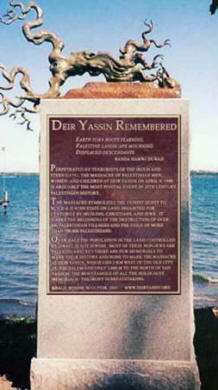

 | T
R
E
E |   September 24, 2003 - "Deir Yassin Remembered," DYR Headquarters, Seneca Lake (western shore), Geneva, New York, New York (USA). Bronze sculpture of an uprooted olive tree by [political cartoonist] Khalil Bendib. Inscription: "Earth torn roots yearning, Palestine landscape mourning displaced descendants. [haiku by] Randa Hamwi Duwaji. Perpetrated by terrorists of the Irgun and Stern Gang, the massacre of Palestinian men, women, and children at Deir Yassin on April 9, 1948 is arguably the most pivotal event in 20th century Palestinian history. // The massacre symbolizes the Zionist quest to build a Jewish state on land inhabited for centuries by Muslims, Christians & Jews. It marks the begining of the destruction of over 400 Palestinian villages & the exile of more than 700,000 Palestinians. // Over half the population in the land controlled by Israel is not Jewish. Most of these non-Jews are Palestinians. Yet there are few memorials to mark their history & none to mark the massacre at Deir Yassin, which lies 3 km west of the Old City of Jerusalem and only 1,400 m to the north of Yad Vashem, the most famous of all the Holocaust memorials. The irony is breathtaking. // Khalil Bendib, Sculptor, 2003. www.deiryassin.org" Third of three "Deir Yassin Remembered" memorials (DYR). September 24, 2003 - "Deir Yassin Remembered," DYR Headquarters, Seneca Lake (western shore), Geneva, New York, New York (USA). Bronze sculpture of an uprooted olive tree by [political cartoonist] Khalil Bendib. Inscription: "Earth torn roots yearning, Palestine landscape mourning displaced descendants. [haiku by] Randa Hamwi Duwaji. Perpetrated by terrorists of the Irgun and Stern Gang, the massacre of Palestinian men, women, and children at Deir Yassin on April 9, 1948 is arguably the most pivotal event in 20th century Palestinian history. // The massacre symbolizes the Zionist quest to build a Jewish state on land inhabited for centuries by Muslims, Christians & Jews. It marks the begining of the destruction of over 400 Palestinian villages & the exile of more than 700,000 Palestinians. // Over half the population in the land controlled by Israel is not Jewish. Most of these non-Jews are Palestinians. Yet there are few memorials to mark their history & none to mark the massacre at Deir Yassin, which lies 3 km west of the Old City of Jerusalem and only 1,400 m to the north of Yad Vashem, the most famous of all the Holocaust memorials. The irony is breathtaking. // Khalil Bendib, Sculptor, 2003. www.deiryassin.org" Third of three "Deir Yassin Remembered" memorials (DYR).

|



| S
C
H
O
O
L |  April 10, 1948 - Dar El Tifl Orphanage & School, East Jerusalem. "In April 1948, Hind al-Husseini [1916-1994], a 31-year-old teacher, came across 55 young orphaned children—most under the age of nine—wandering near the Church of the Holy Sepulchre in Jerusalem. They were survivors of the massacre in the Arab village of Deir Yassin. Husseini immediately rented them two rooms. Subsequently, she established an orphanage in her Jerusalem home, a mansion built by her grandfather in 1891... Until Israel recently closed off the West Bank’s access to Jerusalem with walls & checkpoints, Dar al-Tifl al-Arabi ("The House of the Arab Child") was the largest Palestinian orphanage, serving over 1500 pupils. Today, it stands virtually empty. The film "138 Pounds in My Pocket" [by Sahera Derbas] asks how al-Husseini & her successor filled gaps left by the absence of a state able, or willing, to provide adequate welfare for disadvantaged children." The feature-length film "Miral" by American filmmaker Julian Schnabel also covers this story. April 10, 1948 - Dar El Tifl Orphanage & School, East Jerusalem. "In April 1948, Hind al-Husseini [1916-1994], a 31-year-old teacher, came across 55 young orphaned children—most under the age of nine—wandering near the Church of the Holy Sepulchre in Jerusalem. They were survivors of the massacre in the Arab village of Deir Yassin. Husseini immediately rented them two rooms. Subsequently, she established an orphanage in her Jerusalem home, a mansion built by her grandfather in 1891... Until Israel recently closed off the West Bank’s access to Jerusalem with walls & checkpoints, Dar al-Tifl al-Arabi ("The House of the Arab Child") was the largest Palestinian orphanage, serving over 1500 pupils. Today, it stands virtually empty. The film "138 Pounds in My Pocket" [by Sahera Derbas] asks how al-Husseini & her successor filled gaps left by the absence of a state able, or willing, to provide adequate welfare for disadvantaged children." The feature-length film "Miral" by American filmmaker Julian Schnabel also covers this story.
|

 

| A
M
B
U
S
H |  April 13, 1948 - Nashashibi Bend, Nablus Road, East Jerusalem. Unintentional monument of the Hadassah Medical Convoy Massacre. Near American Colony Hotel (qv). 79 killed by Arab forces in retalliation for the Deir Yassin Massacre. From BackSpin: "At junction where Nablus Road suddenly veers left & also connects to the Mt. of Olives Road on the right. It was at this hairpin turn where Arabs ambushed a Hadassah medical convoy going up to the Mt. Scopus hospital. It was a massacre by any standards: 79 doctors & nurses & Haganah escorts were killed. The monument is [in the upper right photo &] at the right of the [upper left] photo. The taxi is turning left onto the continuation of Nablus Road.
The monument is so close to the street I didn't feel safe standing in front of it for any length of time as cars passed awfully close behind me. The junction gave me the creeps; it was indeed the perfect place for an ambush." Lower images show memorial at the Hadassah Hospital on Mt. Scopus. April 13, 1948 - Nashashibi Bend, Nablus Road, East Jerusalem. Unintentional monument of the Hadassah Medical Convoy Massacre. Near American Colony Hotel (qv). 79 killed by Arab forces in retalliation for the Deir Yassin Massacre. From BackSpin: "At junction where Nablus Road suddenly veers left & also connects to the Mt. of Olives Road on the right. It was at this hairpin turn where Arabs ambushed a Hadassah medical convoy going up to the Mt. Scopus hospital. It was a massacre by any standards: 79 doctors & nurses & Haganah escorts were killed. The monument is [in the upper right photo &] at the right of the [upper left] photo. The taxi is turning left onto the continuation of Nablus Road.
The monument is so close to the street I didn't feel safe standing in front of it for any length of time as cars passed awfully close behind me. The junction gave me the creeps; it was indeed the perfect place for an ambush." Lower images show memorial at the Hadassah Hospital on Mt. Scopus.
|
May 14, 1948 - Israel is declared independent of the British Mandate for Palestine by David Ben-Gurion, executive head of the World Zionist Organization & chairman of the Jewish Agency for Palestine...
The event is celebrated annually in Israel with a national holiday called Yom Ha'atzmaut.

|
May 14, 1948 - The UN General Assembly adopts resolution 186(S-2), which affirms its support for the efforts of the Security Council to secure a truce in Palestine; decides to appoint a UN Mediator -- Count Folke Bernadotte of Sweden was appointed -- & send him to Palestine. 
May 22, 1948 - The UN Security Council adopts resolution 49 (1948), calling for an abstention from any hostile military action in Palestine. The resolution also calls upon the parties to facilitate the task of the UN Mediator. 
May 23, 1948 - Thomas C. Wasson [1896-1948], US Consul General & member of the UN Truce Commission, is assassinated in the street just outside the American consulate in East Jerusalem. 
May 29, 1948 - "UN Security Council Resolution 50 (1948) calls for a cessation of hostilities in Palestine & decids that the truce should be supervised by the UN Mediator, Count Folke Bernadotte of Wisborg, with the assistance of a group of military observers." 
May 29, 1948 - "The UN General Assembly founds the UN Truce Supervision Organization (UNTSO). Its primary task is providing the military command structure to the peace keeping forces in the Middle East to enable the peace keepers to observe & maintain the cease-fire, & as may be necessary in assisting the parties to the Armistice Agreements in the supervision of the application & observance of the terms of those Agreements... UNTSO observers will arrive in the region in June 1948." 

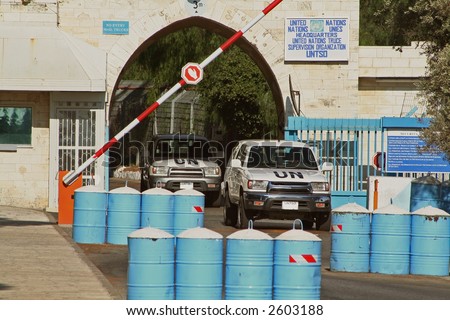



|
 June 1948? - UN Headquarters, Alar Street (an extension of Haas Promenade), Jerusalem (Israel). This is the UN's first peacekeeping operation. Sign on wall reads "United Nations, Nations Unies, Headquarters, United Nations Truce Supervision Organization, UNTSO." Right two images show UN Secretary-General Kofi Annan addressing the staff at the UNTSO on 13 March 2005. Did the UN occupy this building in 1948 or later? Near the 2008 Tolerance Park & Monument (qv).
June 1948? - UN Headquarters, Alar Street (an extension of Haas Promenade), Jerusalem (Israel). This is the UN's first peacekeeping operation. Sign on wall reads "United Nations, Nations Unies, Headquarters, United Nations Truce Supervision Organization, UNTSO." Right two images show UN Secretary-General Kofi Annan addressing the staff at the UNTSO on 13 March 2005. Did the UN occupy this building in 1948 or later? Near the 2008 Tolerance Park & Monument (qv).

|
 | H
O
U
S
E |  1948-2011 - Orient House, East Jerusalem. Unintentional monument. "Built in 1897 & owned by the Al-Husayni family until 1967... Between 1948–1950, the headquarters of the UN Relief & Works Agency for Palestinian Refugees in the Near East (UNRWA). Two years later, its owner turned it into a luxury hotel called "The New Orient House." Following the 1967 war & the occupation of East Jerusalem by Israel, the property was seized by the Government of Israel as the property of a war criminal... Served as the headquarters of the Palestine Liberation Organization (PLO) in the 1980's & 1990's, then as the unofficial Palestinian 'foreign office' until 2001..." "The Orient House was last in the news in 2007, when Mahmoud Abbas said he wanted it reopened. Israel shut down the building as the PA's Jerusalem office immediately after the 2001 Sbarro's suicide bombing when 15 people were killed." "Demolished to make way for construction of housing on January 11, 2011, following a court decision allowing the project to proceed. A portion of the left facade was left standing as a historic site." 1948-2011 - Orient House, East Jerusalem. Unintentional monument. "Built in 1897 & owned by the Al-Husayni family until 1967... Between 1948–1950, the headquarters of the UN Relief & Works Agency for Palestinian Refugees in the Near East (UNRWA). Two years later, its owner turned it into a luxury hotel called "The New Orient House." Following the 1967 war & the occupation of East Jerusalem by Israel, the property was seized by the Government of Israel as the property of a war criminal... Served as the headquarters of the Palestine Liberation Organization (PLO) in the 1980's & 1990's, then as the unofficial Palestinian 'foreign office' until 2001..." "The Orient House was last in the news in 2007, when Mahmoud Abbas said he wanted it reopened. Israel shut down the building as the PA's Jerusalem office immediately after the 2001 Sbarro's suicide bombing when 15 people were killed." "Demolished to make way for construction of housing on January 11, 2011, following a court decision allowing the project to proceed. A portion of the left facade was left standing as a historic site."

|


 | M
U
S
E
U
M |  Date? - Etzel Museum, just off Charles Clore Park near Alma beach, Tel Aviv (Israel). Blog by Richard Parker 18Jul10: "Deir Yassin Massacre - Israel Still Lying After All These Years. [Right image] is a photo of the [Beit Yassim plaque] taken by Helena Cobban in the Irgun Museum. I doubt if there are many other terrorist organisations graced with their own museum. 250 killed, or just 110? Doesn't matter much. Only 5 of 'our fighters' died.
Etzel is another name for Irgun, run by Menachim Begin (later Israeli Prime Minister) Lehi, or Stern Gang was run by Yitzhak Shamir (later Israeli Prime Minister) both were out-and-out terrorist organisations.
Note: The Irgun Museum is itself a reconstruction of an old Arab/Ottoman building. I wonder if they blew off the top storeys before they put that greenhouse up there." Date? - Etzel Museum, just off Charles Clore Park near Alma beach, Tel Aviv (Israel). Blog by Richard Parker 18Jul10: "Deir Yassin Massacre - Israel Still Lying After All These Years. [Right image] is a photo of the [Beit Yassim plaque] taken by Helena Cobban in the Irgun Museum. I doubt if there are many other terrorist organisations graced with their own museum. 250 killed, or just 110? Doesn't matter much. Only 5 of 'our fighters' died.
Etzel is another name for Irgun, run by Menachim Begin (later Israeli Prime Minister) Lehi, or Stern Gang was run by Yitzhak Shamir (later Israeli Prime Minister) both were out-and-out terrorist organisations.
Note: The Irgun Museum is itself a reconstruction of an old Arab/Ottoman building. I wonder if they blew off the top storeys before they put that greenhouse up there."
|
 September 17, 1948 - UN mediator Folke Bernadotte [1895-1948] is assassinated by the Lehi (Stern Group) (which is then banned by the Israeli government). American Ralph Bunche [1903-1971] is named acting UN mediator on Palestine. After eleven months of virtually ceaseless negotiating, Bunche obtained signatures on armistice agreements between Israel & the Arab States.
Bunche returned home to a hero's welcome. New York gave him a 'ticker tape' parade up Broadway; Los Angeles declared a 'Ralph Bunche Day." He received the Nobel Peace Prize in 1950. September 17, 1948 - UN mediator Folke Bernadotte [1895-1948] is assassinated by the Lehi (Stern Group) (which is then banned by the Israeli government). American Ralph Bunche [1903-1971] is named acting UN mediator on Palestine. After eleven months of virtually ceaseless negotiating, Bunche obtained signatures on armistice agreements between Israel & the Arab States.
Bunche returned home to a hero's welcome. New York gave him a 'ticker tape' parade up Broadway; Los Angeles declared a 'Ralph Bunche Day." He received the Nobel Peace Prize in 1950. 
|
  October 18, 1948 - The flag of the Arab Revolt is adopted by the All-Palestine Government. It will be recognised subsequently by the Arab League as the flag of Palestine. A modified version will be officially adopted as the flag of the Palestinian people by the PLO in 1964 and adopted as the flag of the State of Palestine on November 15, 1988. October 18, 1948 - The flag of the Arab Revolt is adopted by the All-Palestine Government. It will be recognised subsequently by the Arab League as the flag of Palestine. A modified version will be officially adopted as the flag of the Palestinian people by the PLO in 1964 and adopted as the flag of the State of Palestine on November 15, 1988.
|






































![]()


-picture-MOV_7d75c1bb_b.jpg)





























